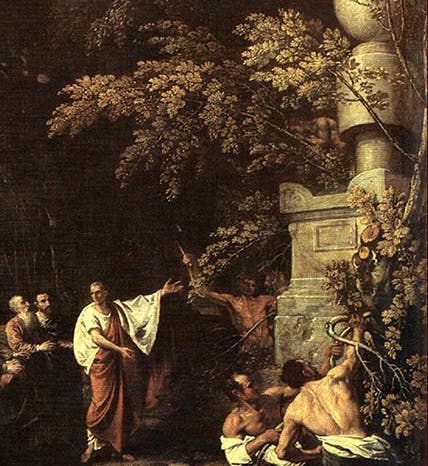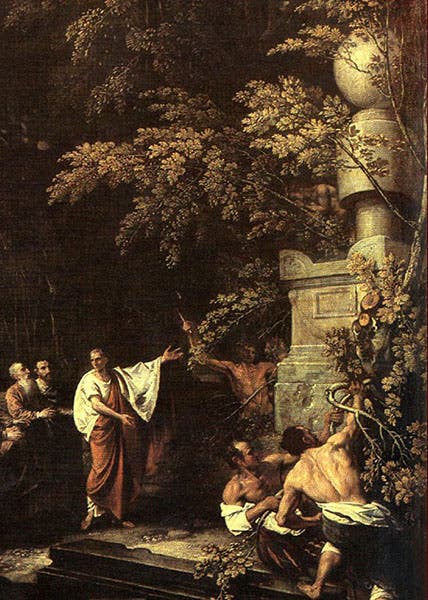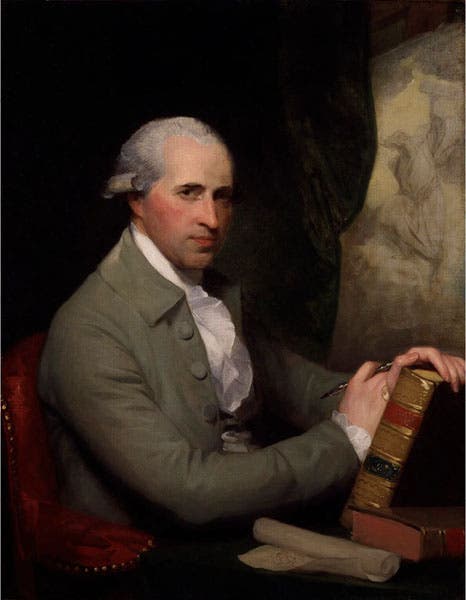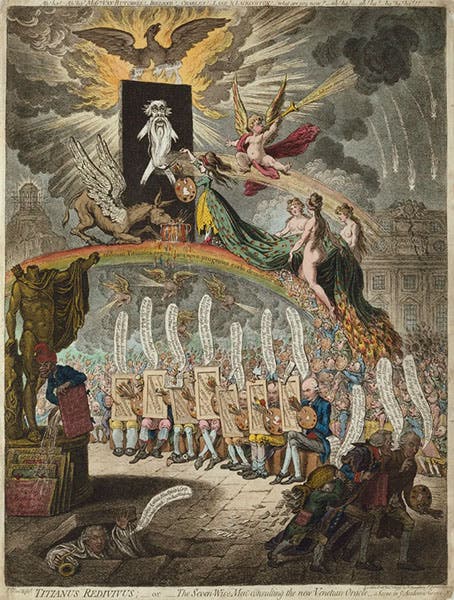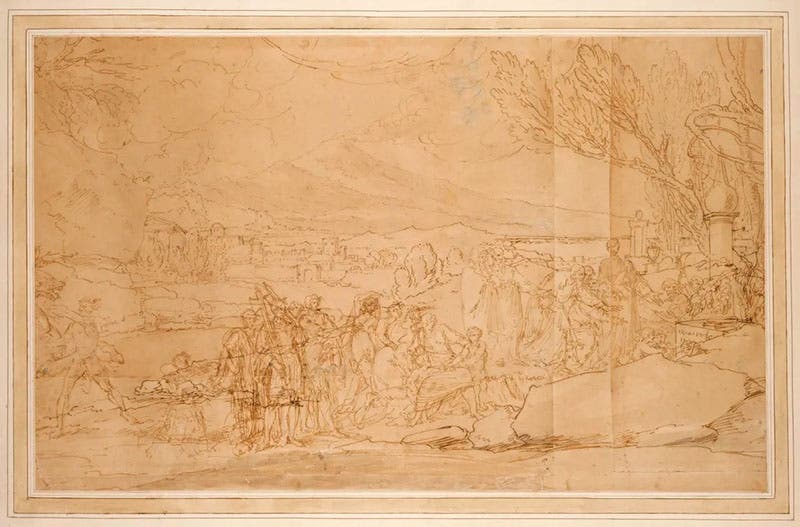Scientist of the Day - Benjamin West
Benjamin West, an American/English painter, was born Oct. 10, 1738, in Springfield, Pennsylvania, the 10th child of an innkeeper. He was entirely self-taught, and never did really learn to read and write with facility, but he was a gifted natural artist, and soon attracted patrons in Philadelphia. He was sponsored for a grand tour of Italy in the early 1760s. He stopped in England in 1763 on the way back, and never left. His painting of The Death of General Wolfe (1770) was the work that put him on the cultural map, and led to securing the patronage of King George III. West was soon an active part of the Royal Academy of Arts, founded by Joshua Reynolds and others in 1768, and would become its president in 1792, succeeding Reynolds.
In 1796, a pair of charlatans claimed they had come into possession of a manuscript, “The Venetian Secret,” which contained the secret color methods and recipes of Titian and his Venetian School of artists. The manuscript turned out to be a fake, but West and many members of the Academy were suckered in, and West went so far as to produce a painting using the color schemes of the “Venetian Secret.” The painting was called Cicero Discovering the Tomb of Archimedes (1797; third image). Before we go further with West’s unfortunate painting, we should first explain about Cicero and Archimedes.
In his Tusculan Disputations, Cicero claimed that, while quaestor in Sicily in 75 BCE, he had discovered the tomb of Archimedes, who was killed at the end of the siege of Syracuse by the Romans in 212 BCE, and was supposedly buried there. Cicero tells us that no one in the city knew anything about Archimedes’ tomb, so Cicero went looking for himself, and found, outside the city, in a graveyard overrun with weeds, a stone column, on top of which was a cylinder and a sphere. Since Archimedes had claimed that his greatest achievement was discovering the ratio between the volumes of a cylinder and its inscribed sphere (3/2), Cicero knew he had found the burial site of the great Greek mathematician, and the discovery scene is what West portrayed in his 1797 painting, with “Venetian coloring.” We also show a detail of the 1797 painting, depicting the grave monument of Archimedes, as our first image.
Well, the painting was no sooner finished, than the “Venetian secret” was revealed to be fraudulent, and the Academy members, and especially West, were immediately lampooned by the penny press. James Gillray, in particular, produced an elaborate cartoon, showing the perpetrators of the scam at the top, and seven duped artists seated below, with their Venetian palettes at hand. West is the most prominent painter depicted, at far right. The ghost of Joshua Reynolds emerges from a trap door in the floor.
West survived the scandal, and seven years later, West repainted the scene, this time using a more conventional color palette (fifth image). The second version, often referred to as the “Atonement” version, is held by the Yale University Art Gallery. In 2008, the curators at Yale learned of the location of the 1797 version, in the New York City private collection of former Disney CEO Michael Eisner, and they (the Gallery and the Center for British Art) decided to mount a mini exhibition in late 2008, displaying both West paintings, the Gillray cartoon, and a preliminary sketch for the first painting, held by the Royal Academy of Art (sixth image). It was apparently a great success, and the webpage describing the exhibition, with a photograph, is still online.
We should mention that West was not the first to portray Cicero’s discovery of Archimedes’ tomb; the French painter Pierre-Henri de Valenciennes had done so in 1787, and we showed that painting as the third image in a post on Valenciennes. We should also note that West continued to recover from his embarrassment, painting one of the best-known portraits of Benjamin Franklin in 1816, which we showed as the lead image in our post on Franklin.
The National Portrait Gallery in London has 44 portraits of West (not by West, but of West). We chose for our portrait here one by another American ex-patriot, Gilbert Stuart (second image), finished in 1785, some 11 years before Stuart, now returned to the United States, did not quite finish his famous portrait of George Washington.
William B. Ashworth, Jr., Consultant for the History of Science, Linda Hall Library and Associate Professor emeritus, Department of History, University of Missouri-Kansas City. Comments or corrections are welcome; please direct to ashworthw@umkc.edu.

